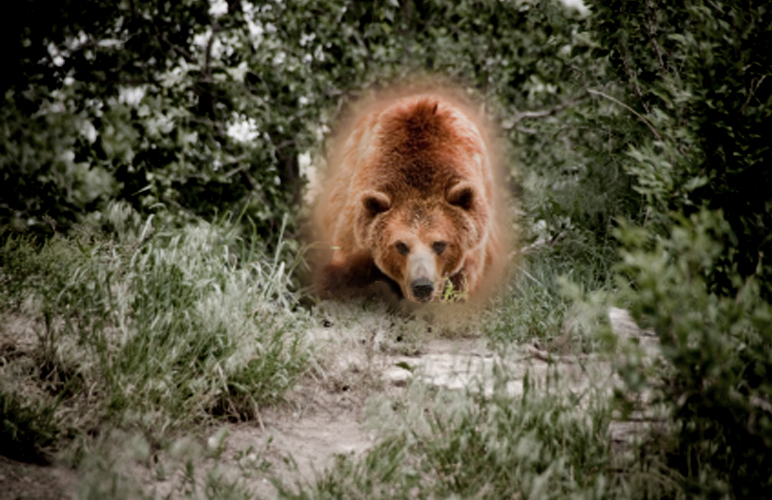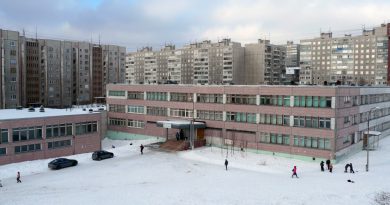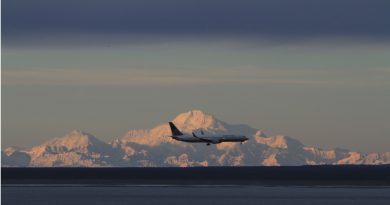How could Alaska students have avoided bear attack?
 Editor’s Note: This is part 2 of a series examining the sequence of events during last summer’s unprecedented grizzly attack on seven teenagers in the Alaska wilderness. Please read part 1 here.
Editor’s Note: This is part 2 of a series examining the sequence of events during last summer’s unprecedented grizzly attack on seven teenagers in the Alaska wilderness. Please read part 1 here.
When a grizzly bear attacked seven National Outdoor Leadership School students hiking through the Talkeetna Mountains last July, three escaped unharmed by clustering together, according to a new report on the accident completed by NOLS investigators.
Authorities on grizzly bears have long said there is safety in numbers when traveling in bear country.
Bear attacks on groups of more than three are essentially unheard of — and the NOLS case seems to illustrate that point.
Four students were injured, two seriously, when the bear attacked. All four, according to the NOLS report, were separated from their companions in thick brush and would have appeared to the bear to be alone. A group of four who retreated to a hillside were not attacked, although one of them who subsequently wandered away from the group on the slope was attacked.
“The students on the slope described the bear as appearing startled and confused,” the report said. “It would attack one person, then look around and chase and attack someone else it saw. It growled when it attacked. They described the bear as 8- or 9-feet tall and golden in color (blonde) and they identified the hump and dished face distinctive of an Alaska brown bear.”
A 9-foot-tall bear is a large grizzly for the Talkeetnas, and professional wildlife biologists say inexperienced hikers who encounter grizzlies frequently overestimate their size. But even a 7-foot-tall grizzly is a huge and powerful animal easily able to kill a human.
No pepper spray used
The students in the NOLS report aren’t named. They are identified only by numbers that correspond to their place in a line of hikers. Though the names of the students are now well known, Alaska Dispatch has decided to follow the school report’s lead in naming only the seriously injured to shield the teenagers from embarrassment.
Though the seven students carried among them three canisters of pepper spray to prevent or stop a bear attack, no one ever used the spray. And though the group of three students on the hill protected themselves by staying together during the attack, they never tried to use the power of their numbers to drive the bear off fellow students.
After the attack, there was much speculation about whether the students had run into a sow with cubs. Grizzly sows are often highly protective of their young. None of the students reported seeing a cub, but they thought there might have been one there.
“The students on the slope … said they saw a large animal run across the drainage through the willows and up the slope on the opposite side … at the beginning of the attack,” the report said. “They could not see it clearly but believe it was a bear cub.”
Given the attack happened at the end of June, a bear cub of the year would be a small animal. Grizzly cubs do, however, stay with their mothers for at least two years; so there could have been a yearling or 2-year-old cub with the bear. That could be a “large animal.” Or the large animal seen fleeing through the brush could have been a moose. Moose frequent the area and bears are sometimes still hunting them in late June, especially cow moose with small and still-vulnerable calves.
The Alaska Department of Fish and Game never investigated the attack, and NOLS investigators made no attempt to determine why a bear or bears might have been in the area. There were no salmon in the creek. The bear could simply have been wandering through, or hunting moose, or dining on concentrations of favored spring greens — cow parsnip, horse tail, false hellebore, lupine and various grasses — found in the Talkeetnas.
The report said the students believed they were making plenty of noise as they went down the creek. “They were loudly calling out ‘hey ho,’ and ‘hey bear,’ as they hiked,” the report said. It concludes a “rock outcrop may have blocked or diminished the sound of their voices.” It is equally possible the bear was preoccupied with whatever it was doing.
Lesson plan not followed
The NOLS report said the organization is reviewing how it teaches students about bears. “These students were taught the skills and techniques to hike in bear habitat and respond to a bear encounter,” the report notes, but they did not follow the lesson plan.
The students, who were unsupervised at the time of the attack, did just about everything the opposite of what they were taught. They had been allowed to go off on their own for three days only after spending more than three weeks in the wild with NOLS instructors.
For what NOLS calls the “student expedition” part of the non-profit organization’s wilderness training classes, the teenagers split into two groups and headed off on their own with a plan to reunite later with instructors. The group that was attacked by the bear, according to NOLS, left a group camp only hours before encountering the bear and was only a few miles away from instructors when attacked. Given the rugged terrain, however, there was no way for the instructors to have even so much as a clue as to what was going on.
NOLS has been offering wilderness training classes in Alaska for 40 years. Backpacking trips in the Talkeetnas began in 1975. The Alaska Wilderness course in which the teens were enrolled dates to 1983. NOLS said it has recorded 740 classes and 8,220 students spending more than 164,000 days in the field with more than 38,000 instructors without a single bear attack until last summer.
Not that there haven’t been bear encounters.
From 1985 to 2010, NOLS said its risk management records show 12 “near-miss accidents with no injury” involving Alaska brown bears, or grizzlies. The two animals are the same, but coastal bears are more often referred to as brown bears with grizzly bears the common name in Interior Alaska, where the Talkeetnas are located.
“These data indicate that bear encounters in Alaska … are rare,” the report noted. That said, the groups were hiking in known bear habitat and had seen a bear — a black — two days earlier. The instructors and a second group of “student expedition” teenagers each also saw a grizzly bear sow and a cub about 45 minutes before the attack. The instructors were then 2 and a half miles from the scene of the attack, the other students about a mile closer.
“The instructors,” the report said, “did not consider the possibility that the bears would run into either of the student groups because they believed the students were not in the path of the bears but were farther south.”
If there was a good food source somewhere in the area, it would not be uncommon for a number of bears to be attracted to an area several miles square. At Hallo Bay, a well-known bear-viewing area on the Alaska Peninsula in Katmai National Park and Preserve, bears congregate like cattle to graze the sedge at certain times during the year.
“Even if the instructors had known that the students were in the path of the bears, there would have been no way for them to warn the students other than hiking toward them and essentially following the bears,” the report added.
The instructors had no way to communicate with the students. The latter’s only communication device was a “Fast Find” personal locator beacon to be used only in an emergency. It promptly malfunctioned when they encountered that emergency. They tried “to activate the beacon, but the red plastic handle broke when they tried to open it,” according to the report. Eventually, they were able to pry the pull handle up with a knife to activate the beacon.
Student response lauded
The NOLS report praises the response of the students after the attack. Without their quick and effective first aid, 17-year-olds Joshua Berg from New York and Samuel Gottsegen from Denver might have died. Both were bleeding so profusely that the bandages in the first-aid kit carried by the students proved sadly inadequate. The students improvised by using dry and semi-dry clothing to keep pressure on Berg’s and Gottsegen’s wounds and stem the bleeding. They also got the bear spray out and prepared in case the bear returned.
Then “it began to rain,” according to the report.
Two of the students found a small clearing and got a tent up. They pulled Berg and Gottsegen into the tent and wrapped them in clothing and sleeping bags. They started a stove to provide some more warmth in the tent. Two of the students went out and gathered packs and equipment to make a large X on the ground, and then they waited for help.
It didn’t arrive, according to the report, until “six hours and 49 minutes from when they estimated the attack occurred.”
The problems in launching a rescue to a wilderness corner of Alaska are well documented. The NOLS report reveals students did not get the rescue beacon turned on until about an hour and a half after the attack. The beacon alerted the Rescue Coordination Center in Anchorage, which then called the NOLS Alaska director. He confirmed it was a NOLS beacon and that the location was consistent with where a group of students should be. The RCC then called the Alaska State Troopers, the first responders in this case, to launch a rescue. The troopers’ helicopter, which is normally based in Anchorage, was in Fairbanks on another mission.
It had to fly south to Talkeetna, pick up a trooper there, and then head for the location of the beacon. Once it arrived on scene, the trooper realized additional help was needed, and half an hour after arrival asked the Alaska Air National Guard for assistance. The 210th Rescue Squadron, staffed by some of the world’s best pilots and pararescue specialists, stands alert 24-7 at Joint Base Elmendorf Richardson just outside Anchorage, some hundred miles south. As the trooper helicopter was flying the least-injured students to Talkeetna, an Air Guard Pavehawk helicopter from JBER was on its way to the scene to rescue seriously injured Berg and Gottsegen.
Troopers response termed ‘adequate’
Both were delivered to the emergency room at Providence Alaska Medical Center in Anchorage at 6:10 a.m. July 25, 2011. An ambulance, which had met the trooper helicopter in Talkeetna, was still almost an hour away from the Palmer hospital with the other two injured students.
The report leaves the impression that NOLS was less than happy with the group’s first-ever use of a personal locator beacon to call for help. “The timeliness of the response by (Alaska State Troopers) was adequate,” the report said, but adds that it was NOLS’s “understanding that since this was a (personal locator beacon) notification it would be viewed as a life-or-limb emergency and that a medical helicopter would have been sent to respond.”
The school does concede that “a faster response or a response with a medical helicopter likely would not have changed the outcome in this particular incident because of the nature of the injuries and the first-aid treatment provided by the uninjured students.” Neither Berg nor Gottsegen had immediately life-threatening wounds, but either could have bled out and died without help from other students.
As a result of what happened, NOLS plans to revise some policies for travel in Alaska bear country, but the unsupervised “student expeditions” — which some have questioned — will continue.
“Independent student group travel is a well-established component of the NOLS curriculum, and is an effective and proven method for developing leadership in NOLS students,” the report says. “It was the instructors’ determination after teaching and observing these students for 23 days that they were ready for the student expedition. Prior to 2011, there have been two bear encounter incidents (no attacks or injuries) reported while students were hiking in brown bear habitat while unaccompanied by instructors. In both cases, the students responded as taught.”
Or at least no one was injured, and the students reported they had responded as taught. Alaska is full of people who have run in fear from bears, but aren’t keen on admitting to it given that such behavior is frowned upon. Running from bears is also frowned upon by NOLS instructors. Running is also an instinctive reaction. Overcoming the instinct takes preparation.
More bear spray practice
NOLS said it plans to restructure its Alaska classes to make sure students are “mentally prepared and physically trained to reliably execute the bear encounter procedures in spite of fear and surprise.” As part of that training, the report says the group will try to begin schooling students in “discharging bear spray using either an inert practice canister or expired bear spray.”
NOLS says it will also change the way bear spray is carried. Instead of putting the spray in a pack pocket, students will “carry bear spray, preferably in a holster, and have it accessible at all times.”
Students, according to NOLS, will also be taught to “practice drawing bear spray with one hand and develop proficiency in drawing it quickly.” And there will be more emphasis placed on making a lot of noise when hiking and keeping groups together.
“The distance apart can range from a few feet to a few yards, depending on the situation,” the report said. “Maintain situational awareness when hiking or in camp to be alert to changing conditions that may inhibit a bear from becoming aware of your presence. … Ambient noise such as from running water or wind, and topographical features such as rock outcrops, ravines or hills. Ask yourself: ‘Could I see a bear and could a bear hear or see me?'”
The latter is good advice for anyone traveling in the Alaska wilderness, but it’s no guarantee against a close-up encounter with a bear. In the wilds, sometimes things just happen.
Editor’s Note: This is part 2 of a series examining the sequence of events during last summer’s unprecedented grizzly attack on seven teenagers in the Alaska wilderness. Please read part 1 here. Contact Craig Medred at craig(at)alaskadispatch.com
For more stories from Alaska Dispatch, click here.



